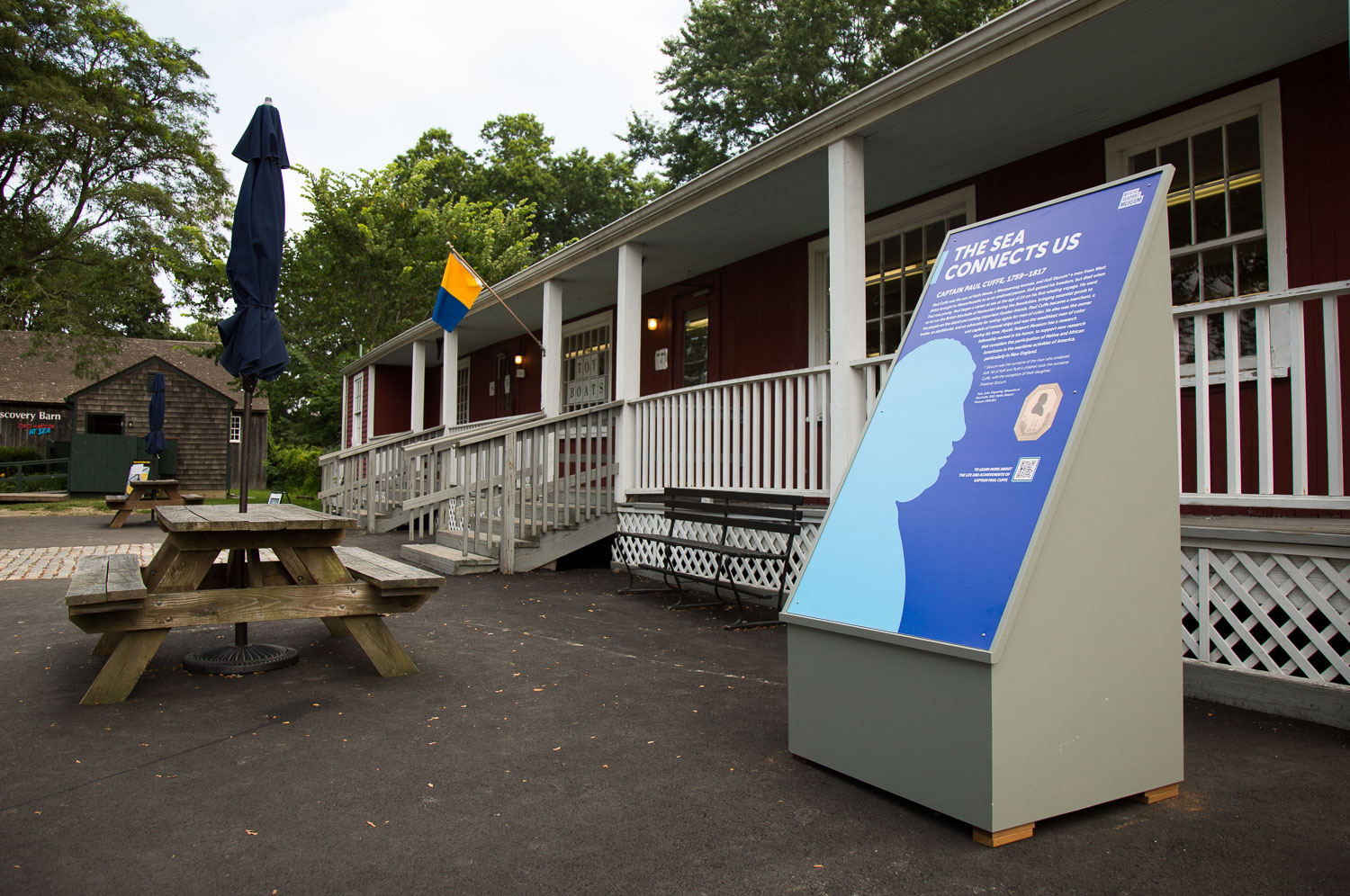An exhibit featuring stories of maritime history from diverse perspectives will be installed throughout the grounds of Mystic Seaport Museum this week.
A series of panels, called “The Sea Connects Us,” is designed to be striking, with bold colors and powerful images on each, said senior curator Akeia Gomes. “The panels are bright and beautiful, and we want people to be drawn in by them. The boldness of the colors is meant to draw attention to visitors.”
Not only will the panel – which are 3 feet by 5 feet – have strong images on them, but also the stories they tell are equally as profound. “When people think of maritime history, they don’t think of people who are African American and Native American,” Gomes said.
The exhibit, part of the Museum’s Diversity, Equity, Accessibility, and Inclusion initiative, will explain how greatly African American and Indigenous people were harmed by colonization and slavery and how they persevered and not only survived but they contributed significantly to maritime history.
Unfortunately, these stories have not been widely told before now, Gomes said.
Each panel will contain 100 words or less, giving visitors a snapshot of a specific piece of history. “We wanted to point out how complex the history of Mystic really is,” Gomes said. “We wanted to introduce people to this history and tell African American and Native American stories, and we wanted to show how they contributed to the country’s maritime narrative.”
Many museums have come to the realization that the way history has been presented is not accurate, Gomes said. “You want to be representative of who comes through your doors, so you want to tell everyone’s stories.”
One of the panels describes the 1637 Mystic Massacre during the Pequot War. It details one of the most brutal slaughters of Indigenous people in U.S. history. It also explains how Mystic was the site of impassioned abolitionist activity in the mid-19th century. And it describes how Mystic had a thriving seaport that provided a livelihood for Indigenous men. The maritime industry created relative racial equality for mariners while onboard a vessel. It also offered stable income and social status for free African American men and provided a means of escape for enslaved African American men.
 Other panels focus on people, like Venture Smith, a Stonington resident born to a prince in Guinea around 1729. He is an example of the double-edged nature of maritime culture. He was enslaved during a tribal war and brought to the British colonies, where he used money from whaling, fishing, and boat rentals to buy freedom for himself and his family. He purchased land in East Haddam, where he constructed several houses and was one of the earliest African-American mariners to leave an autobiographical account of their life.
Other panels focus on people, like Venture Smith, a Stonington resident born to a prince in Guinea around 1729. He is an example of the double-edged nature of maritime culture. He was enslaved during a tribal war and brought to the British colonies, where he used money from whaling, fishing, and boat rentals to buy freedom for himself and his family. He purchased land in East Haddam, where he constructed several houses and was one of the earliest African-American mariners to leave an autobiographical account of their life.
Gomes wanted to ensure that women’s voices were part of the exhibit. Two of the stories told in this exhibit are of women.
The panel focusing on Hannah Miller, 61, of the Mashantucket Pequot Tribe, explains the broader story of how older women were left to deal with tribal politics and act as chiefs to represent the interests of the reservation when the Mashantucket Pequot men left for economic opportunities. Many went to work in the maritime industries in Mystic and other port towns, which caused them to live apart from their families for weeks or years.
Sadly, what occurred is the political leadership of women was not respected among Euro-American communities, and the absence of men from Indigenous communities reinforced Euro-American notions of “disappearing Indians.”
Gomes said she hopes that museums will not have to continue to host special exhibits like this in the future, because everyone will be involved in the narrative at some point. “These are great first steps,” she said.



